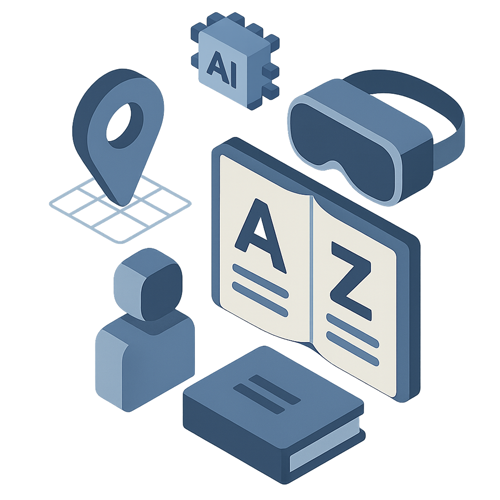Explore how virtual learning boosts productivity, cuts costs, and scales employee development.
Virtual training is rapidly transforming how businesses educate their workforce. Amid shifting global markets and technological advancements, companies are embracing virtual environments to upskill employees efficiently and cost-effectively. Virtual training offers a flexible, scalable approach that aligns with diverse learning styles and schedules, making it an indispensable tool for Learning & Development (L&D) managers aiming to boost workforce productivity.
This guide explores the direct benefits of virtual learning systems and provides actionable insights for L&D professionals. By integrating sophisticated virtual training platforms, organizations can enhance employee skills and drive significant improvements in operational productivity.
Through this exploration, L&D managers will discover strategies to effectively implement virtual learning and measure its impact on their teams. Join us as we delve into the ways virtual training can serve as a catalyst for employee development and organizational growth.
Why Productivity Starts with Virtual Learning
Productivity in the modern workplace begins with efficient training methods. Virtual learning platforms offer streamlined, accessible training solutions that employees can access from anywhere. Virtual environments enable quicker competency and faster return to productive work by reducing downtime and accelerating the training process. Companies leveraging these tools report shorter training cycles and improved employee performance metrics.
Virtual Learning as a Strategic Tool for Workforce Growth
Virtual training transforms workforce development by tailoring education to current business needs. Scalable, personalized, and engaging, these platforms boost your company’s growth. Here’s how virtual learning reshapes training approaches:
- Enhanced accessibility. Employees, regardless of location, access training sessions, ensuring opportunities are boundless.
- Improved engagement. Captivating interactive elements and multimedia content lead to higher retention rates and enjoyable experiences.
- Customized learning paths. Tailoring training materials to align with individual career goals facilitates both personal and professional development.
- Cost efficiency. Reducing the need for physical resources, travel, and venue costs makes virtual training a cost-effective solution.
- Consistent quality. Standardizing training ensures each team member receives the same high-quality resources.
- Rapid skill acquisition. Technologies such as VR offer simulated environments where employees practice skills in real time, accelerating the learning process.
Adopting virtual training not only enhances productivity by equipping employees with necessary skills more efficiently but also keeps your workforce competitive amidst industry shifts.
Why L&D Managers Must Rethink Traditional Training Models
VR training applications are redefining the approach to employee development. The limitations of conventional training models are becoming more apparent, prompting L&D managers to seek innovative alternatives that offer both effectiveness and efficiency. Here are compelling reasons to adopt VR training:
- Real-world Application. VR scenarios simulate real-life challenges, providing employees with practical skills that translate directly to their roles.
- Increased Retention. The immersive nature of VR training enhances memory retention by engaging multiple learning senses.
- Immediate Feedback. Interactive VR environments offer real-time feedback, allowing learners to adjust their approach and understand concepts more deeply.
- Adaptive Learning. VR applications can adjust the difficulty level based on the learner’s progress, providing a customized experience that meets individual skill levels.
- Safe Learning Environment. Trainees can practice hazardous or difficult tasks within a controlled, risk-free VR setting, which is crucial for high-risk industries.
- Scalability. Virtual training can be easily scaled to accommodate an increasing number of participants without significant additional costs.
By integrating VR into training strategies, L&D managers not only enhance the learning outcomes but also significantly contribute to the overall agility and productivity of the workforce. Such a strategic shift not only modernizes training practices but also aligns them more closely with contemporary business requirements and employee expectations.
What Is Virtual Learning in the Context of Workplace Training?
Virtual learning in workplace training refers to using digital platforms to deliver educational content and simulations. By leveraging technologies such as VR in education, employees experience immersive learning that enhances their skills in real-time scenarios, directly impacting their professional effectiveness and productivity.
Understanding What Is Virtual Learning and Its Key Components
Virtual learning revolutionizes traditional training methods by integrating advanced technologies to create dynamic, interactive educational environments. Here’s a breakdown of its fundamental components:
- Technology-driven delivery. Utilizes advanced platforms, including VR, to facilitate immersive learning experiences.
- Interactive content. Engages participants with interactive modules that provide instant feedback, making learning more effective.
- Flexible learning schedules. Allows employees to learn at their own pace, accommodating different learning styles and work schedules.
- Scalability. Adapts easily to increasing numbers of learners without a need for extensive additional resources.
- Data-driven insights. Employs analytics to track progress and optimize training strategies based on real-time data.
Understanding these elements enables organizations to implement virtual learning effectively, enhancing their training programs and employee skill development.
How Virtual Platforms Support Continuous Learning on the Job
Virtual platforms are crucial in promoting continuous, scenario-based learning within the workplace. They support skill development and refinement through the following mechanisms:
- Realistic job scenarios. Virtual environments simulate real-world challenges specific to job roles, enabling employees to practice and hone necessary skills without the risks associated with real-world applications.
- Direct job application. Skills learned can be immediately applied, allowing employees to integrate new knowledge into their daily tasks, reinforcing learning, and enhancing job performance.
- Feedback for improvement. Platforms provide instant feedback on performance, helping learners quickly correct mistakes and improve their understanding and execution of tasks.
- Ongoing skill enhancement. Regular content updates and new scenario introductions keep skills current in rapidly changing industries.
- Collaborative learning opportunities. Facilitate sharing knowledge and strategies among colleagues, strengthening team collaboration and problem-solving capabilities.
Virtual platforms ensure that learning is not only an initial training event but a continuous part of an employee’s career development path, adapting to ongoing changes in the workplace and industry.
Quelle:






